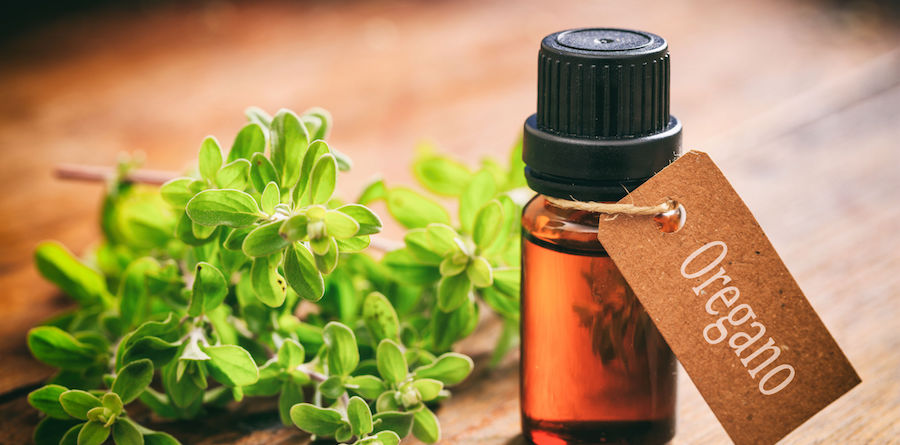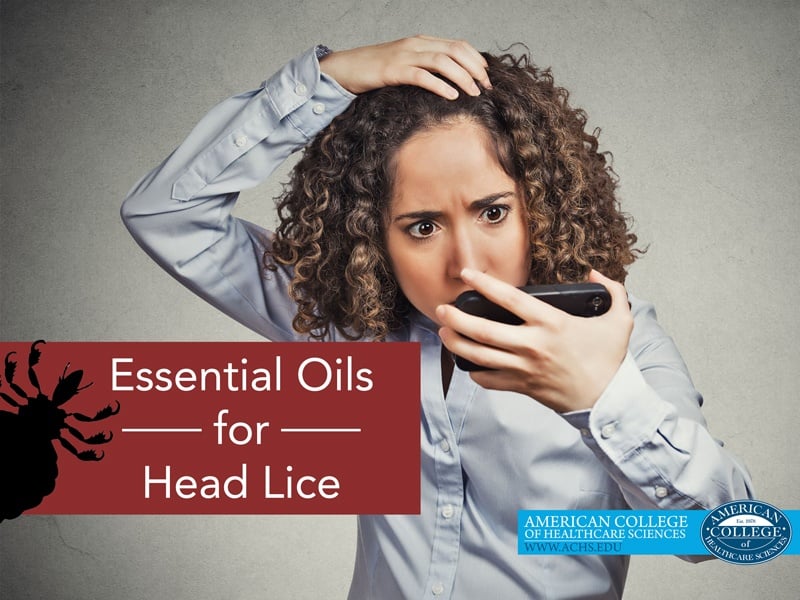Are essential oils the future of the food industry?
The modern food industry has evolved into a complicated system. Fruits and vegetables are cultivated in one part of the country, transported into another region to be prepared as jams or juices, and are sold into yet another totally different area. We’re not surprised when we buy cheese made in France or butter cookies from Denmark. Chickens raised and processed in China can soon become common at our dinner table. This long chain that connects customers to producers will not be able to function if we can't find a way to give our food products longer shelf lives.
Still, shelf life varies across products; refrigerated meat can last up to one week whereas packaged hard cheese can last up to a month. Manufacturers add synthetic antioxidants and antimicrobials to food products to achieve these long shelf lives. For example, the bread loaf you purchase in the grocery store is likely to include butylated hydroxyanisole (BHA), butylated hydroxytoluene (BHT), propyl gallate, tert-butylhydroquinone (TBHQ), and/or various sulfates used to scavenge free radicals and slow down the oxidation processes, as well as propionates with sorbates to inhibit yeast fermentation. Similarly, benzoates are added to jams to suppress yeast growth while nitrates are commonly used in meat.
Safety of many of these additives is quite questionable. For example, BHA is indicated as a carcinogen under California Proposition 65.[1] And, according to one study, the addition of BHT into the diet significantly increased incidence of liver tumors in male mice.[2] A few studies have also shown that BHT can cause pulmonary (lung) inflammation.[3] There is ongoing research funded by the National Institute of Environmental Health Sciences on the possible link between the TBHQ and food allergies.[4] Plus, a few studies have linked sodium benzoate with the development of ADHD.[5]
Not surprisingly, food companies are searching for safe, natural alternatives to these potentially harmful synthetic chemicals.
Research groups are investigating essential oils as many of them have antioxidant properties and are powerful antibacterial and antifungal agents. In addition, essential oil-rich spices and aromatic plants have traditionally been used in Middle Eastern, Indian, and Amharic cuisines to enhance food taste and stimulate digestion.
The following essential oils are particularly promising in several studies. So, don’t be surprised if you start to see them listed with other ingredients in your food products! In addition, you can also try adding them to the dishes you prepare at home to enhance taste, to kill harmful bacteria, and to prevent food from spoilage.
1. Oregano Essential Oil
Oregano essential oil is extracted from the flowering parts of Origanum vulgare (L.), a perennial plant native to the Mediterranean, Europe, and Asia. The phenolic compound carvacrol––a main constituent of this essential oil (65-85%)––is a powerful antioxidant and antifungal compound.
Many studies are focused on its use to expand the shelf life of meat products. For example, a small addition of oregano essential oil (up to 1% v/w) to ground meat was shown to delay microbial growth[6], while its addition to beef meat fillets contaminated with Listeria monocytogenes eliminated these harmful bacteria.[7]
You may have heard about the Escherichia coli (E. coli) outbreak that spread over the Chipotle restaurant chain and affected more than 60 customers in 2015. Studies have shown that an addition of oregano essential oil to eggplant salad and apple juice[8] contaminated with E. coli suppressed growth of these bacteria.[9] It may be a prudent for Chipotle to consider adding this essential oil when preparing salads to better protect customers. One way to add oregano essential oil to a salad is to include it in a dressing. You can juice one lemon, combine it with one tablespoon of extra virgin olive oil, and add one to two drops of oregano essential oil.
If you do not have oregano essential oil, you can use other essential oils with high phenolic content, like summer savory Satureja hortensis (L.) or thyme Thymus vulgaris (L.). Remember, essential oils are highly concentrated and one drop is equivalent to two tablespoons of fresh herb. (You can find more essential oil cooking tips in the ACHS eBook, Top 10 Culinary Essential Oils.)
2. Citrus Essential Oils
Citrus essential oils, such as sweet orange Citrus × sinensis (L.) Osbeck, lemon Citrus × limon (L.) Burm.f., and bergamot Citrus aurantium var. bergamia (Risso) are cold-pressed from the citrus fruit peels. These essential oils are rich with limonene, a monoterpene that is a strong antibacterial and antifungal agent. Citrus essential oils suppress growth of many bacteria that can cause food poisoning.[10] They are very effective antimicrobial agents when added to bread and mozzarella cheese.[11], [12]
If you want to try homemade mozzarella cheese that is quite easy to prepare, you can add essential oil directly to the brine. Use no more than eight drops of essential oil per quarter gallon of brine (0.04%). Note that eight drops of essential oil is equivalent to one tablespoon of lemon zest or one teaspoon of extract.
3. Synergistic Preservative Effects and Edible Films
Many studies are focused on the synergistic effect of essential oils. Researchers are searching for the combinations of essential oils that will make them effective against a broader range of bacteria and fungi; combine both antimicrobial and antioxidant effects; and allow the essential oils to achieve the desired results with the minimal concentration.
One possible method to achieve this is to add essential oil combinations to edible fibers and to coat the surface of food products—such as bread, cheese, and fruits—creating edible films. These films protect freshness and prevent growth of pathogenic bacteria. Edible films containing a combination of clove Syzygium aromaticum (L.) and oregano Origanum vulgare (L.)[13] and a combination of oregano Origanum vulgare (L.), rosemary Rosmarinus officinalis (L.), and garlic Allium sativum (L.)[14] essential oils were found to be particularly effective.
Research on the use of essential oils in the food industry is still in the “childhood” phase with more exciting discoveries to come. Still, the findings are extremely encouraging and suggest that essential oils can replace synthetic preservatives and create all-natural, safe, and tasty food products with a long shelf life.
In the meantime, why not try cooking with essential oils?
Disclosure of Material Connection: I am the Associate Academic Dean at American College of Healthcare Sciences, the Institution that publishes this blog. However, all opinions are my own. This blog may contain affiliate links. I am disclosing this in accordance with the Federal Trade Commission’s 16 CFR, Part 255: “Guides Concerning the Use of Endorsements and Testimonials in Advertising.”
This article is for informational purposes only. It is not intended to treat, diagnose, cure, or prevent disease. This article has not been reviewed by the FDA. Always consult with your primary care physician or naturopathic doctor before making any significant changes to your health and wellness routine.
[1] See http://oehha.ca.gov/proposition-65/chemicals/butylated-hydroxyanisole
[2] Lindenschmidt, R., Tryka, A., Goad, M., & Witschi, H. (1986). The effects of dietary butylated hydroxytoluene on liver and colon tumor development in mice. Toxicology, 38(2), 151-160. http://dx.doi.org/10.1016/0300-483x(86)90116-2
[3] Bauer, A., Dwyer-Nield, L., Hankin, J., Murphy, R., & Malkinson, A. (2001). The lung tumor promoter, butylated hydroxytoluene (BHT), causes chronic inflammation in promotion-sensitive BALB/cByJ mice but not in promotion-resistant CXB4 mice. Toxicology, 169(1), 1-15. http://dx.doi.org/10.1016/s0300-483x(01)00475-9
Alison K. Bauer, Lori D. Dwyer-Niel,. (2001). BUTYLATED HYDROXYTOLUENE (BHT) INDUCTION OF PULMONARY INFLAMMATION: A Role in Tumor Promotion. Experimental Lung Research, 27(3), 197-216. http://dx.doi.org/10.1080/01902140120756
Bauer, A., Dixon, D., DeGraff, L., Cho, H., Walker, C., Malkinson, A., & Kleeberger, S. (2005). Toll-Like Receptor 4 in Butylated Hydroxytoluene-Induced Mouse Pulmonary Inflammation and Tumorigenesis. JNCI Journal Of The National Cancer Institute, 97(23), 1778-1781. http://dx.doi.org/10.1093/jnci/dji403
[4] Kelley, G. & Gleason, S. (2016). Common additive may be why you have food allergies. MSUToday. Retrieved from http://msutoday.msu.edu/news/2016/common-additive-may-be-why-you-have-food-allergies/
[5] Beezhold, B., Johnston, C., & Nochta, K. (2012). Sodium Benzoate-Rich Beverage Consumption is Associated With Increased Reporting of ADHD Symptoms in College Students: A Pilot Investigation. Journal Of Attention Disorders, 18(3), 236-241. http://dx.doi.org/10.1177/1087054712443156
Noorafshan, A., Erfanizadeh, M., & Karbalay-Doust, S. (2014). Sodium benzoate, a food preservative, induces anxiety and motor impairment in rats. Neurosciences, 19(1), 24-8.
[6] Skandamis, P. & Nychas, G. (2001). Effect of oregano essential oil on microbiological and physico-chemical attributes of minced meat stored in air and modified atmospheres. J Appl Microbiol, 91(6), 1011-1022. http://dx.doi.org/10.1046/j.1365-2672.2001.01467.x
[7] Tsigarida, E., Skandamis, P., & Nychas, G. (2000). Behaviour of Listeria monocytogenes and autochthonous flora on meat stored under aerobic, vacuum and modified atmosphere packaging conditions with or without the presence of oregano essential oil at 5 oC. J Appl Microbiol, 89(6), 901-909. http://dx.doi.org/10.1046/j.1365-2672.2000.01170.x
[8] Friedman, M., Henika, P., Levin, C., & Mandrell, R. (2004). Antibacterial Activities of Plant Essential Oils and Their Components against Escherichia coli O157:H7 and Salmonella enterica in Apple Juice. J. Agric. Food Chem., 52(19), 6042-6048. http://dx.doi.org/10.1021/jf0495340
[9] Skandamis, P. & Nychas, G. (2000). Development and Evaluation of a Model Predicting the Survival of Escherichia coli O157:H7 NCTC 12900 in Homemade Eggplant Salad at Various Temperatures, pHs, and Oregano Essential Oil Concentrations. Applied And Environmental Microbiology, 66(4), 1646-1653. http://dx.doi.org/10.1128/aem.66.4.1646-1653.2000
[10] Fisher, K. & Phillips, C. (2006). The effect of lemon, orange and bergamot essential oils and their components on the survival of Campylobacter jejuni, Escherichia coli O157, Listeria monocytogenes, Bacillus cereus and Staphylococcus aureus in vitro and in food systems. J Appl Microbiol, 101(6), 1232-1240. http://dx.doi.org/10.1111/j.1365-2672.2006.03035.x
VIUDA-MARTOS, M., RUIZ-NAVAJAS, Y., FERNÁNDEZ-LÓPEZ, J., & PEREZ-ÁLVAREZ, J. (2008). ANTIBACTERIAL ACTIVITY OF LEMON (CITRUS LEMON L.), MANDARIN (CITRUS RETICULATA L.), GRAPEFRUIT (CITRUS PARADISI L.) AND ORANGE (CITRUS SINENSIS L.) ESSENTIAL OILS. Journal Of Food Safety, 28(4), 567-576. http://dx.doi.org/10.1111/j.1745-4565.2008.00131.x
[11] -ur-Rehman, S., Hussain, S., Nawaz, H., Mushtaq Ahmad, M., Anjum Murtaza, M., & Jaffar Rizvi, A. (2007). Inhibitory Effect of Citrus Peel Essential Oils on the Microbial Growth of Bread. Pakistan Journal Of Nutrition, 6(6), 558-561. http://dx.doi.org/10.3923/pjn.2007.558.561
[12] Gammariello, D., Di Giulio, S., Conte, A., & Del Nobile, M. (2008). Effects of Natural Compounds on Microbial Safety and Sensory Quality of Fior di Latte Cheese, a Typical Italian Cheese. Journal Of Dairy Science, 91(11), 4138-4146. http://dx.doi.org/10.3168/jds.2008-1146
[13] Otoni, C., Pontes, S., Medeiros, E., & Soares, N. (2014). Edible Films from Methylcellulose and Nanoemulsions of Clove Bud ( Syzygium aromaticum ) and Oregano ( Origanum vulgare ) Essential Oils as Shelf Life Extenders for Sliced Bread. J. Agric. Food Chem., 62(22), 5214-5219. http://dx.doi.org/10.1021/jf501055f
[14] Seydim, A. & Sarikus, G. (2006). Antimicrobial activity of whey protein based edible films incorporated with oregano, rosemary and garlic essential oils. Food Research International, 39(5), 639-644. http://dx.doi.org/10.1016/j.foodres.2006.01.013






